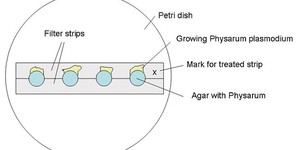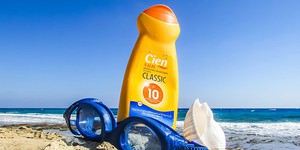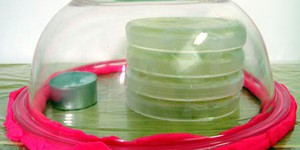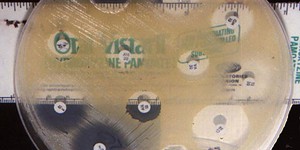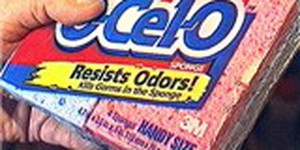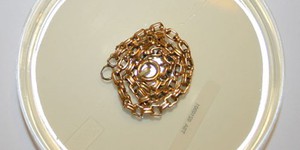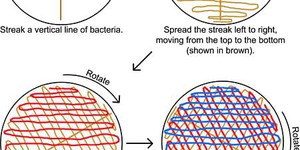Others Like “Effect of Ultraviolet UV Rays on Yeast Colony Growth” (top 20 results)
|
In this biology science fair project, you will observe how the Physarum polycephalum (P. polycephalum) organism responds to various amounts of glucose. P. polycephalum is easy to grow in a petri dish and responds in complex ways to its environment. Will it grow toward the chemical as it looks for a meal, or will it flee, trying to avoid further contact? Try this science fair project to learn more about chemotaxis in the fascinating Physarum polycephalum.
Read more
Have you heard that garlic powder is supposed to inhibit the growth of bacteria? Which do you think would make a better disinfectant: a solution of garlic powder or a solution of bleach? This project shows you a straightforward way to compare the effectiveness of different disinfectants (or other antimicrobial agents), by measuring zones of inhibition on a culture plate.
Read more
Have you ever thought about how fortunate you are to have safe and clean water coming out of your faucet? Many people in undeveloped nations don't have this luxury. But does that mean they can't have clean water at all? Is there an inexpensive way they could use to make their own clean water? In this microbiology science fair project, you will investigate whether or not sunlight can disinfect contaminated water.
Read more
Imagine a wonderful summer day at the beach. You play in the sand, swim in the ocean—and, of course, put a lot of sunscreen on. The sunscreen protects your skin from harmful ultraviolet (UV) radiation. Special ingredients absorb or reflect the UV rays so they do not harm your skin. Different types of sunscreen have different types of ingredients, and some of them can be harmful to the environment—especially if they get into the ocean. In this science project you will put your…
Read more
Have you ever noticed that most yogurt containers say they contain "live cultures"? What does that mean? The label is suggesting that the yogurt has living bacteria in it! While some types of bacteria can make you sick, some are actually important to keep you healthy. But individual bacteria are so tiny that you cannot see one with the naked eye, so how can you tell if bacteria are really living in your yogurt? In this science fair project, you will investigate whether yogurt actually…
Read more
Have you ever wondered where acne comes from and how you can treat it? One major cause of acne is the colonization and infection of clogged pores with bacteria. In this science project, you'll test different acne medications and treatments to determine their effectiveness at killing bacteria.
Read more
Have you ever wondered how antibiotics and other medicines are able to stop dangerous infections? How do such medications kill microorganisms without in general harming the person the microorganisms are infecting? Because many different types of microorganisms can infect us, we have had to develop an amazing number of ways to deal with these harmful microbes. Fungal infections can be particularly dangerous, but we have developed many different antifungal medications that can usually deal with…
Read more
If you'd rate yourself high on the bacteriophobia scale, just keep on scrolling down to the next project. Bacteria are all around us, and normally our body's defenses keep us blissfully unaware of them. If you don't mind finding out where they're lurking in your house, then you might find this project interesting.
Read more
Have you ever wondered if a piece of jewelry is real gold or if it's just some ordinary metal alloy? It turns out that some metals have a unique property; even in small amounts, they can be toxic to some organisms, including algae, molds, fungi, and bacteria, although it often takes many hours to see an effect. Can this phenomena, called the oligodynamic effect be used to tell whether or not the gold or silver in a piece of jewelry is real? Do bacteria react differently to pure, plated, and…
Read more
Do you know what is living in your backyard? How about at the playground, or in your compost pile? Nematodes, also called roundworms, are the most abundant animal on Earth and they might be living in any of these places. In this science project you'll isolate nematodes from several soil samples to discover the best nematode habitats.
Read more
|
Explore Our Science Videos
What are the Chances? – A Probability STEM activity
Magic Triangles - Fun Math Puzzles with Increasing Difficulty
Model How Herd Immunity Works


